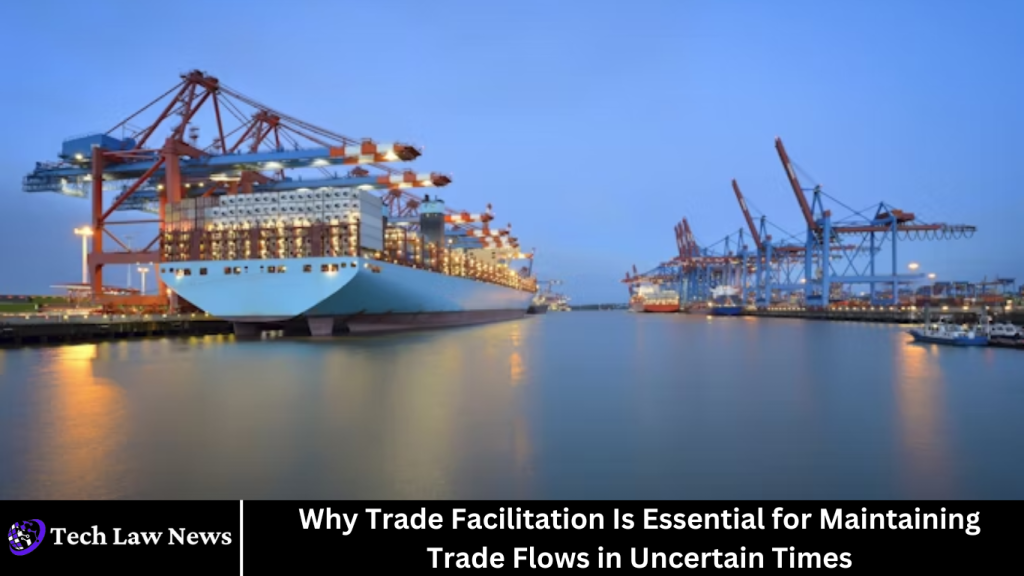In a world increasingly characterized by economic volatility, geopolitical tensions, and global health crises, the seamless movement of goods across borders is more critical than ever. Trade facilitation—the simplification, modernization, and harmonization of export and import processes—plays a pivotal role in ensuring that international trade remains resilient and efficient, even amidst uncertainty.
More Read: Reimagining Work: How Smart Data Is Shaping the Job Market
Understanding Trade Facilitation
Trade facilitation encompasses a range of measures aimed at reducing the complexities and costs associated with international trade. These measures include streamlining customs procedures, enhancing transparency, adopting digital technologies, and improving coordination among border agencies. The World Trade Organization’s (WTO) Trade Facilitation Agreement (TFA), which came into force in 2017, serves as a global framework guiding these efforts.
The Importance of Trade Facilitation in Uncertain Times
Mitigating Supply Chain Disruptions
Global crises, such as the COVID-19 pandemic, have underscored the fragility of supply chains. Trade facilitation measures, like expedited customs clearance and digital documentation, have proven instrumental in maintaining the flow of essential goods during such disruptions. For instance, during the pandemic, many countries adopted “green lanes” to prioritize the movement of critical supplies.
Reducing Trade Costs
Efficient trade procedures can significantly lower transaction costs. According to the OECD, implementing trade facilitation reforms can reduce trade costs by an average of 4.5%, with some regions experiencing reductions up to 16% . These savings are particularly beneficial for developing countries and small and medium-sized enterprises (SMEs), which often face higher relative costs in international trade.
Enhancing Transparency and Predictability
Uncertainty in trade regulations can deter investment and hinder business planning. Trade facilitation promotes transparency by ensuring that rules and procedures are clearly documented and accessible. The WTO’s TFA emphasizes the importance of publishing trade information online, providing advance rulings, and establishing inquiry points to assist traders .
Digitalization: A Cornerstone of Modern Trade Facilitation
The digital transformation of trade processes is central to effective trade facilitation.
Single Window Systems
Single Window Systems allow traders to submit all required documentation through a single electronic platform, streamlining interactions with various government agencies. For example, Pakistan’s Single Window initiative aims to reduce the time and cost of cross-border trade by digitizing procedures and eliminating redundant processes.
Electronic Documentation
The adoption of electronic documents, such as e-certificates and e-invoices, reduces paperwork, minimizes errors, and accelerates processing times. During the COVID-19 pandemic, the acceptance of scanned copies and digital signatures became more widespread, facilitating trade while adhering to health protocols .
Case Studies: Trade Facilitation in Action
ASEAN Single Window
The Association of Southeast Asian Nations (ASEAN) implemented the ASEAN Single Window (ASW) to enhance trade efficiency among member states. The ASW enables the electronic exchange of trade documents, reducing clearance times and fostering regional economic integration.
Impact on Developing Countries
Developing nations stand to gain significantly from trade facilitation. The WTO estimates that full implementation of the TFA could increase developing countries’ exports by up to $730 billion annually . Moreover, these reforms can lead to greater export diversification, making economies more resilient to sector-specific shocks.
Challenges and the Path Forward
While the benefits of trade facilitation are clear, challenges remain. Implementing reforms requires investment in infrastructure, capacity building, and regulatory changes. Additionally, coordination among various stakeholders is essential to ensure cohesive and effective implementation.
International cooperation and support play a crucial role in overcoming these challenges. Organizations like the World Bank and the World Customs Organization provide technical assistance and funding to help countries implement trade facilitation measures .
Frequently Asked Question
What is trade facilitation and why is it important?
Trade facilitation refers to simplifying and streamlining procedures and controls governing the movement of goods across borders. It’s important because it reduces trade costs, improves efficiency, and helps maintain steady trade flows—especially critical during periods of global uncertainty.
How does trade facilitation help during economic or political crises?
In times of crisis, such as wars, pandemics, or financial instability, trade facilitation ensures that essential goods can still flow across borders by minimizing delays, reducing bureaucracy, and increasing flexibility in supply chains.
What are some examples of trade facilitation measures?
Common measures include digital customs systems, Single Window platforms, pre-arrival processing of goods, risk-based inspections, and electronic documentation. These practices speed up trade while increasing transparency and security.
What role does the WTO’s Trade Facilitation Agreement (TFA) play?
The WTO TFA provides a global framework to help countries implement trade facilitation reforms. It aims to simplify border procedures, improve coordination, and support developing countries in building the infrastructure needed for efficient trade.
How does trade facilitation support developing countries?
Trade facilitation reduces costs and barriers that disproportionately affect developing countries. It improves access to global markets, increases export diversification, and enhances competitiveness, leading to inclusive economic growth.
What are the main challenges in implementing trade facilitation?
Challenges include limited infrastructure, lack of digital capacity, bureaucratic resistance, and insufficient funding. Overcoming these often requires international support, public-private cooperation, and strong political commitment.
How can digitalization improve trade facilitation?
Digital tools—like electronic customs systems, blockchain tracking, and paperless trade documentation—boost speed, accuracy, and transparency. They are especially valuable during disruptions, enabling resilient and contactless cross-border trade.
Conclusion
In an era marked by uncertainty, trade facilitation emerges as a vital tool for sustaining and enhancing global trade flows. By reducing costs, improving efficiency, and fostering transparency, trade facilitation not only supports economic growth but also strengthens the resilience of supply chains. As the global community navigates future challenges, continued investment in and commitment to trade facilitation will be essential for a more connected and prosperous world.

